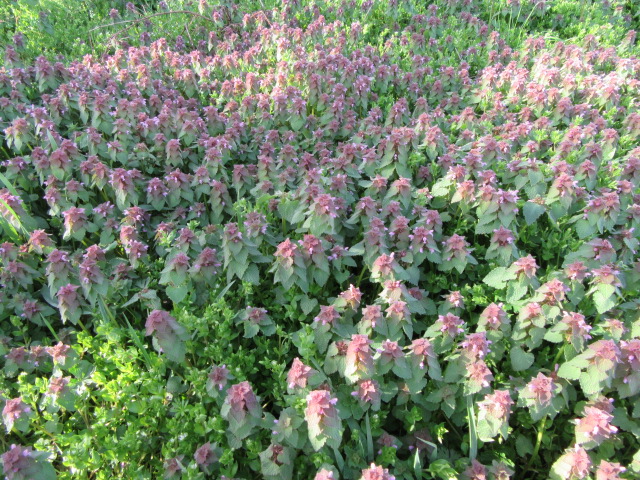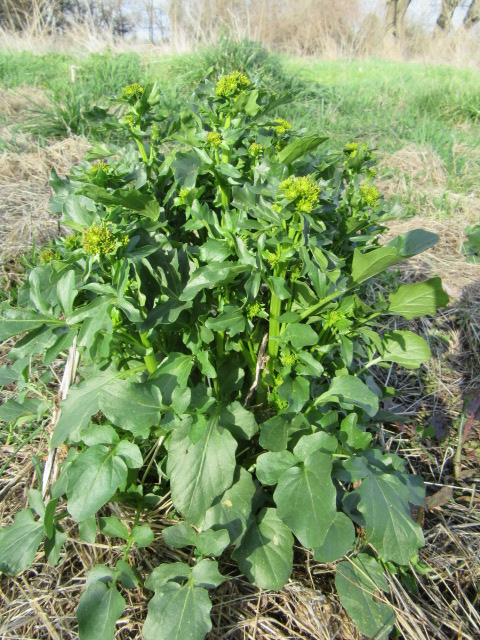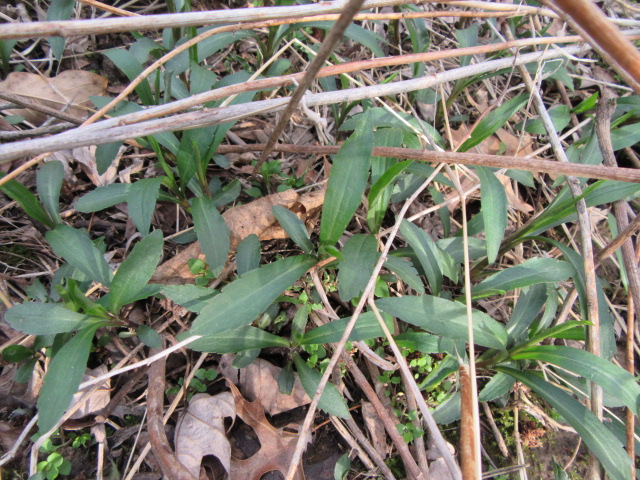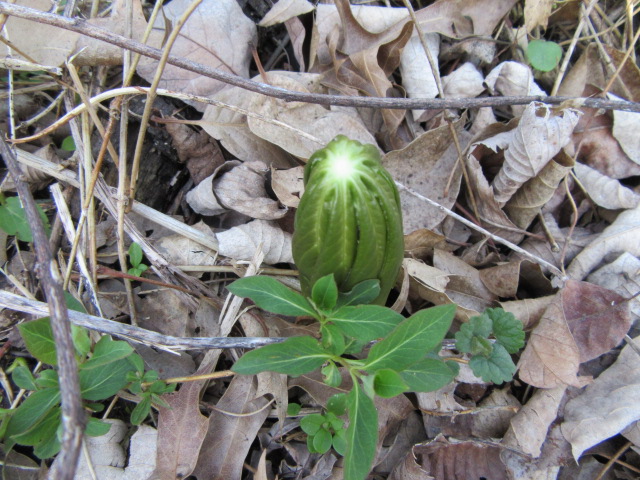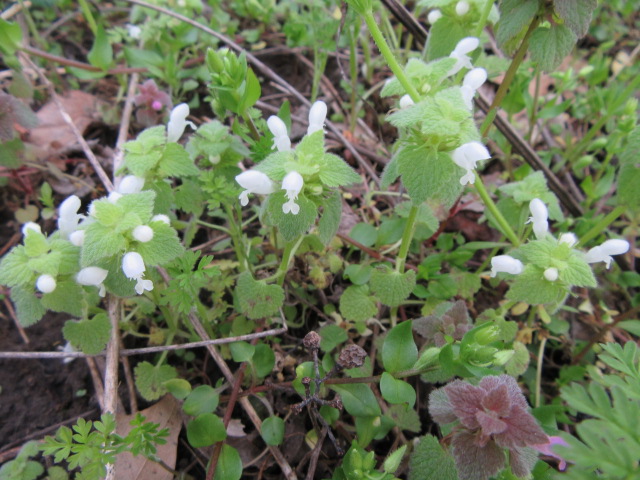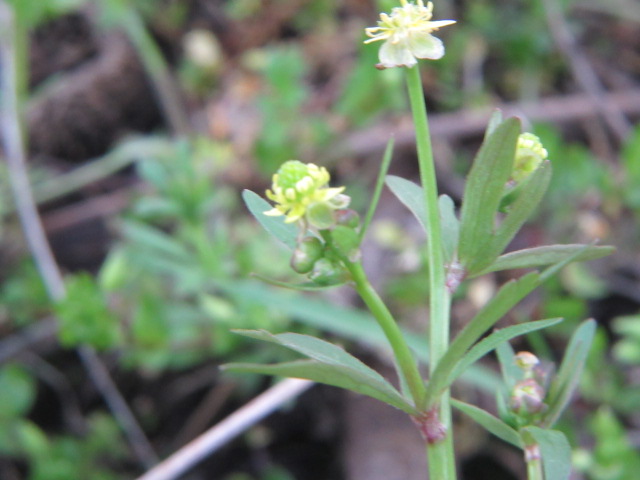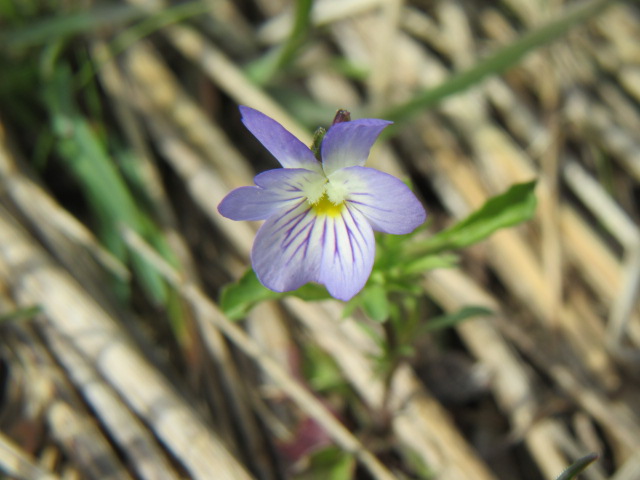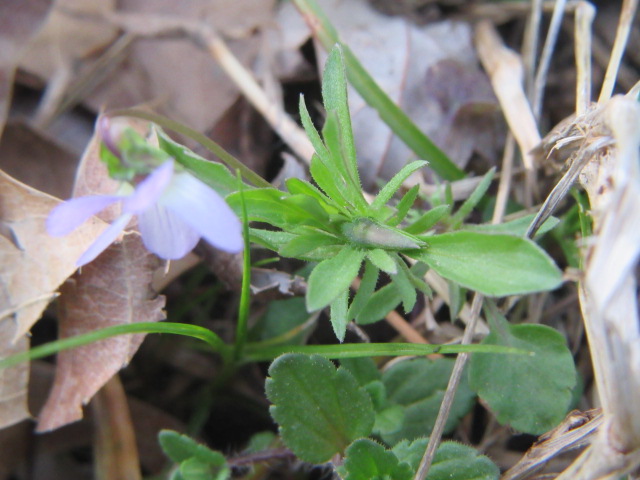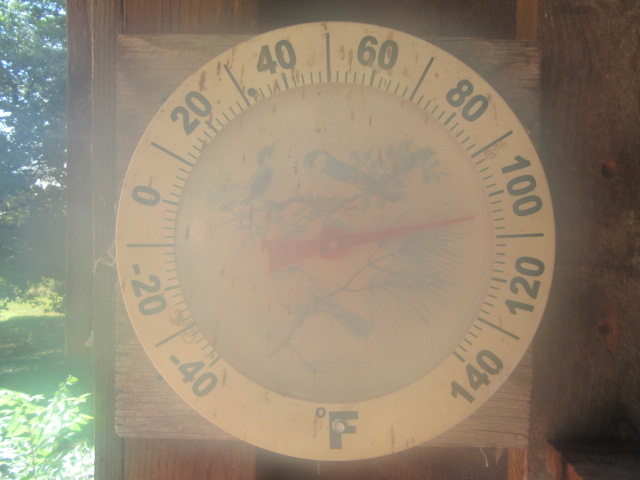
Hello everyone! I hope this post finds you all well. I apologize for not posting for a while. It has been a weird summer for sure with the heat and drought. I was busy with the garden picking sweet corn and green beans right up until August 17. Somehow I managed to get 455 ears of sweet corn in the freezer, and thanks to the ‘Provider’ green beans, 34 quarts of green beans. Of course, not all the green beans and sweet corn made it to the freezer. I ate some and gave some away. Some of the sweet corn went to the chickens because of pollination issues and, with some, only half an ear was good enough to go to the freezer. The ‘Tendersweet’ and ‘Contender’ green beans didn’t do well at all. It was so hot the majority of the flowers fell off despite frequent watering. I picked only 7 quarts from 4 double rows 25′ long from them. The ‘Provider’ however, made up for it with 27 quarts from only 2 double rows about the same length. It was planted 2 weeks later.
The above photo of the thermometer was taken on August 24 at 12:15 PM. I had the AC charged so the camera fogged up every time I got ready to take photos. I picked the last green beans on August 16 and 17, 10 gallons, when we had a cool spell (and we had rain). All the next week it was 100 plus every day. What hadn’t burned up before did that week.
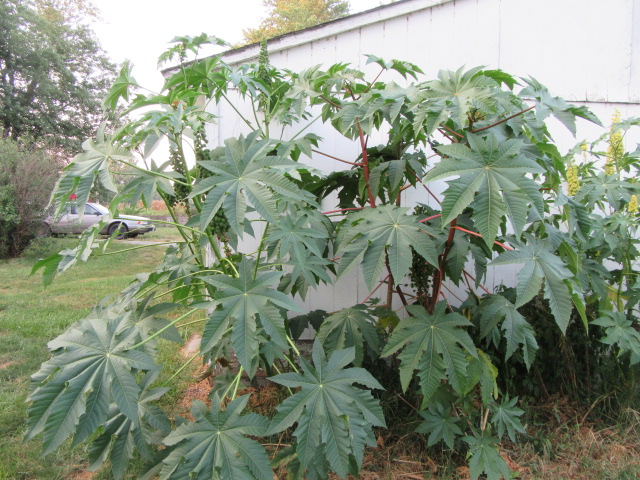
Castor Beans on 9-7-23.
I bought a six-pack of Castor Bean plants earlier this spring. I planted them along the garage because I couldn’t figure out where else to plant them. Heck, they were in the pack for 2 weeks before I put them in the ground. They barely grew despite watering them nearly every day. Then they took off like there was no tomorrow. The first two are the tallest… One has green stems and one has red. They are LOADED with seed!
I hadn’t been on a wildflower walk since June 4, so on Sunday, I decided to see what was going on. Despite a little rain recently, it was a pitiful sight…
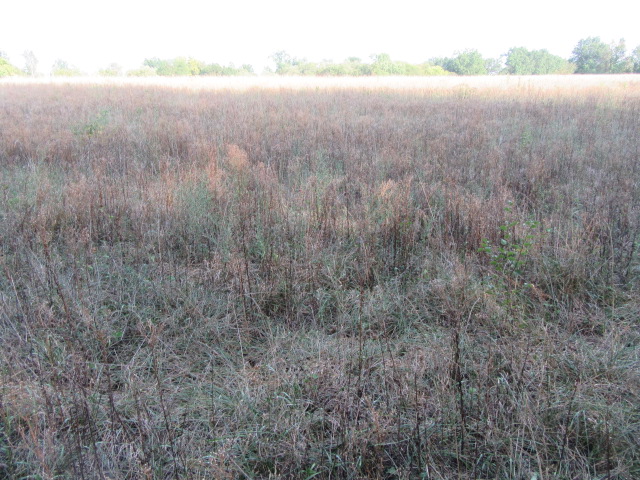
View of the main hayfield from the northwest corner on 9-10-23.
The wildflowers that are normally still in flower in abundance such as Black-Eyed Susan, Ironweed, and Annual Fleabane didn’t flower very well and are all dried up. Most of the stems are so bare you can’t tell what they once were. I walked along the fence on the north side of the hayfield toward the back. In the distance, I could see the dried-up patches of Asclepias syriaca (Common Milkweed) that had already bloomed, which would be typical this time of the year. But, there are normally several hundred young plants as well. Normally, the hay would have been cut and the milkweed and other persistent plants would start growing again. This year, no hay was cut here because there was no grass in the main hayfield. I will admit that the grass in the hayfields has been scant the last few years anyway.
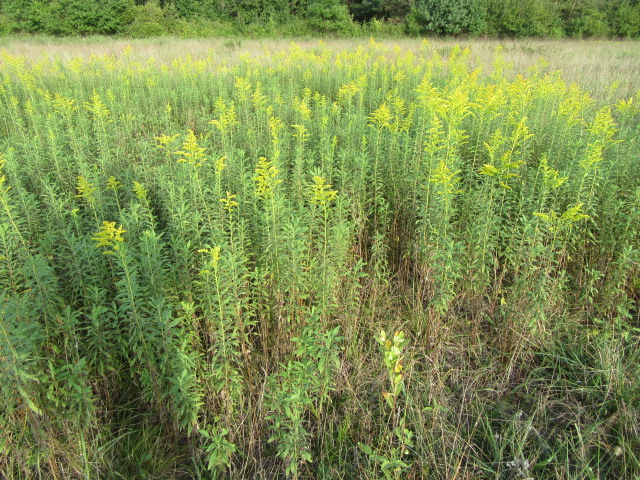
Solidago sp. (Goldenrod) on 9-10-23.
Several HUGE patches of Goldenrod (Solidago sp.) look great despite the heat and lack of water. Some wildflower species flourish when other species don’t and get an even bigger foothold. I haven’t been to the south hayfield for a while but I am sure there are A LOT of Goldenrod there as well. They used to only be around the fence rows but not so much inside the fields. There are many species of Solidago in Missouri that are quite similar. I think the species on the pasture is Solidago altissima and/or Solidago gogantea.
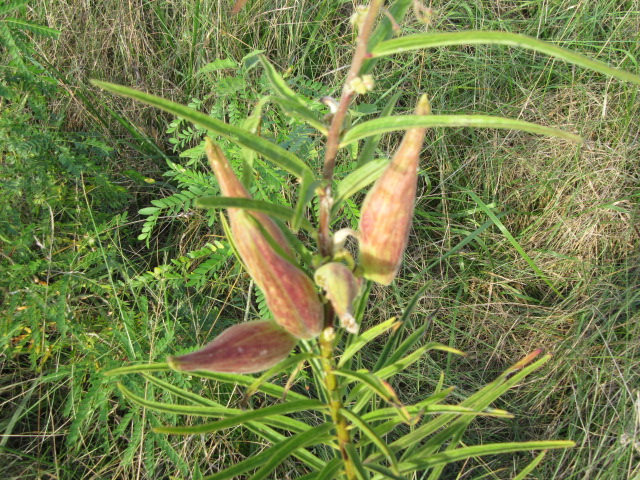
Asclepias hirtella (Tall Green or Prairie Milkweed) on 9-10-23.
Milkweeds are very drought-tolerant so they came up, flowered, and many of their seed pods have already burst open. The seed pods on this Asclepias hirtella (Tall Green or Prarie Milkweed) are still well intact. The Missouri Plants website says the common name is Prairie Milkweed, while iNaturalist says Tall Green Milkweed. I am not sure why that would be a common name since they don’t grow that tall…
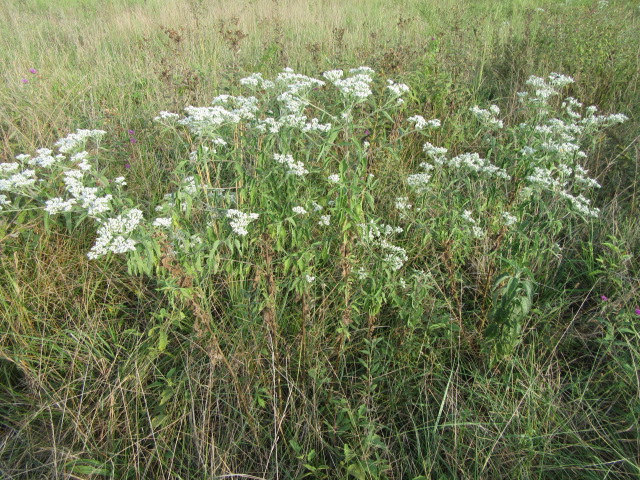
Eupatorium serotinum (Late Boneset/Late Thoroughwort) on 9-10-23.
Walking farther toward the back ponds, there were very few Eupatorium serotinum (Late Boneset/Late Thoroughwort). They are a very tough species, especially around low areas where I found this small colony. There are quite a few growing along the ditch in the front pasture. Ummm… I am pretty sure this is Eupatorium serotinum instead of Eupatorium altissimum (Tall Thoroughwort). They sometimes confuse me.
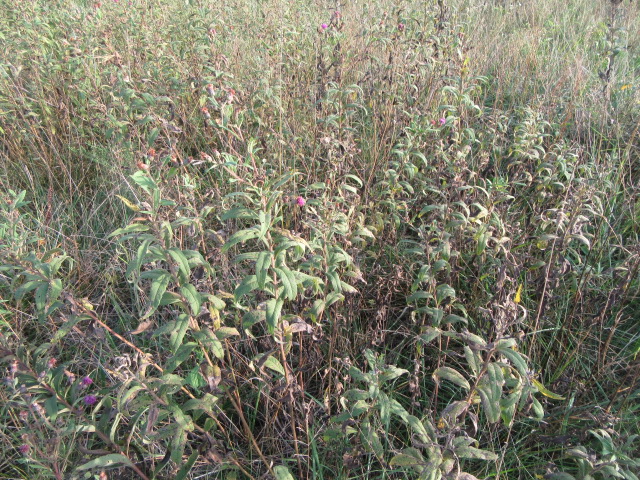
Vernonia missuurica (Missouri Ironweed) on 9-10-23.
The Ironweeds have really struggled this summer which isn’t good. Most of the Ironweeds, both species, are pretty much all dried up. I think it was in 2021 when the Ironweed was so numerous from late September to early October when the Monarchs were here in mass. I had never seen them like that before or since. It was quite a sight. I wonder what they will do when they come to the Midwest this year and there is hardly any food.
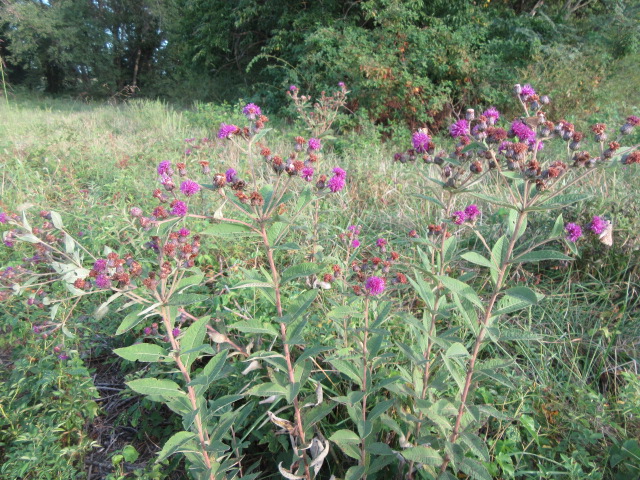
Vernonia missurica (Missouri Ironweed) on 9-10-23
Ahhh… Here’s a clump that looks pretty good. This is Vernonia missurica (Missouri Ironweed). I didn’t see any Vernonia baldwinii (Baldwin’s or Western Ironweed) that wasn’t already dried up. Hmmm… I don’t have a page for either species…
Oh, do I see a touch of yellow?
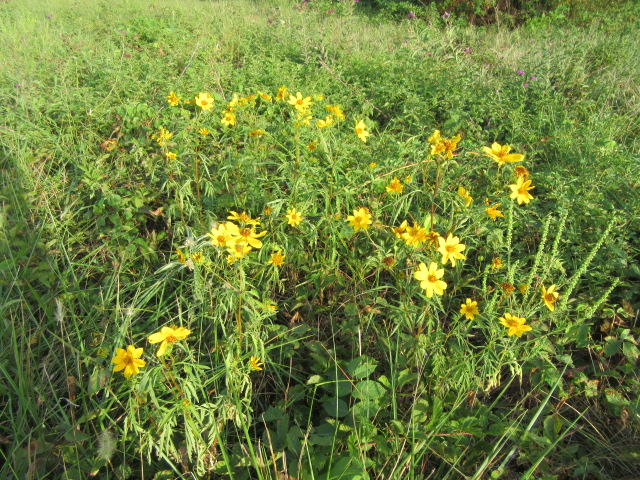
Bidens aristosa (Bearded Beggarticks/Tickseed Sunflower) on 9-10-23
Well, no doubt the Bidens aristata (Bearded Beggarticks/Tickseed Sunflower) will brighten your day. I haven’t even gotten to the pond yet where they are usually growing in abundance.
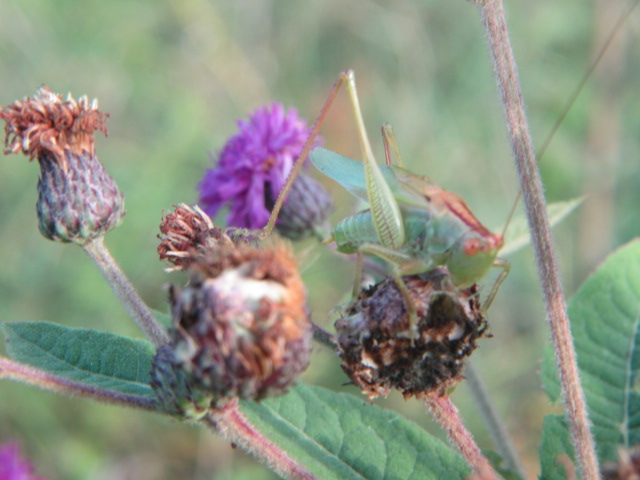
Orchelium vulgare (Common Meadow Katydid) on 9-10-23
There weren’t very many butterflies, grasshoppers, or other insects flying around because there wasn’t much food for them. On another Missouri Ironweed with a few flowers was this Orchelium vulgare (Common Meadow Katydid). They are quite common on leaves, but this one seems interested in a dried flower… Hmmm…
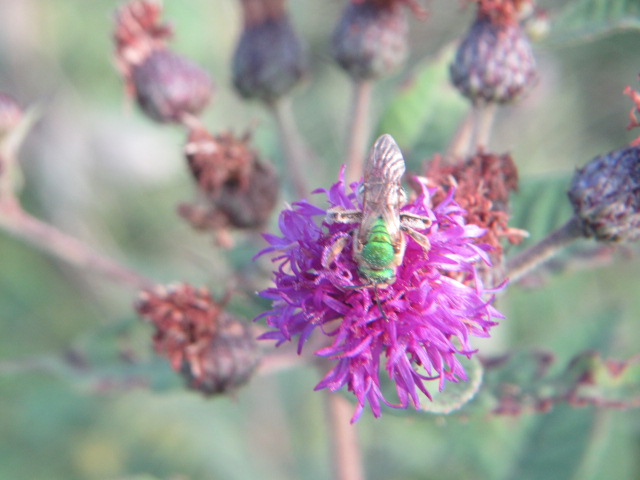
Agapostemon virescens (Bicolored Striped Sweat Bee) on 9-10-23
I spotted this small green bee on the same plant as the katydid. I’ve seen these before but I could never get a good shot. It could be an Agapostemon virescens (Bicolored Striped Sweat Bee). I decided to leave it alone and head toward the pond.

Back pond #1 on 9-10-23.
The first pond in the back of the farm isn’t much of a pond even when it has water but there is always a lot going on around it. It always amazes me how many species of plants grow in this pond and around it. It’s like an oasis.
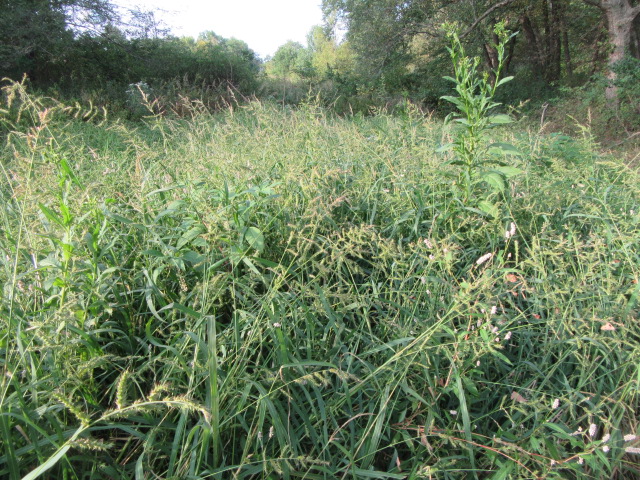
Echinochloa crus-galli (Barnyard Grass) on 9-10-23.
Nearly half the pond is covered with this grass that could be Echinochloa crus-galli (Barnyard Grass). It is considered to be one of the world’s worst weeds It reduces crop yields and causes forage crops to fail by removing up to 80% of the available nitrogen in the soil. Plus it acts as a host for several mosaic virus diseases. Individual plants can produce up to 40,000 seeds per year. Hopefully, it is a species of harmless grass that isn’t an introduced invasive species. I am not really good with identifying grass species except for what is more common.
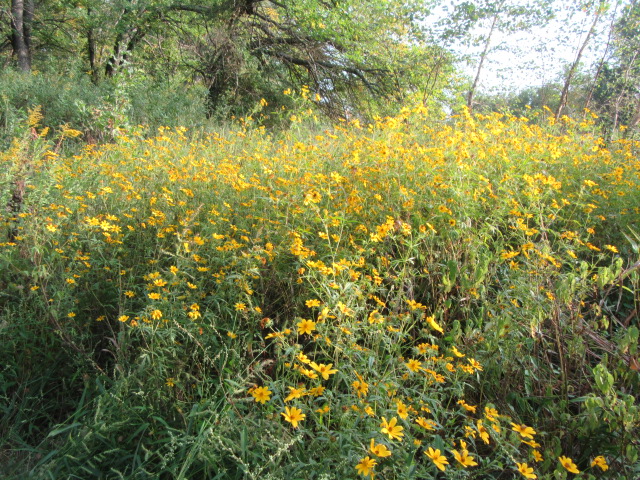
Bidens aristosa (Bearded Beggarticks/Tickseed Sunflower) on 9-10-23.
On the bank on the south side of the pond was a nice-sized colony of Bidens aristosa (Bearded Beggarticks/Tickseed Sunflower).
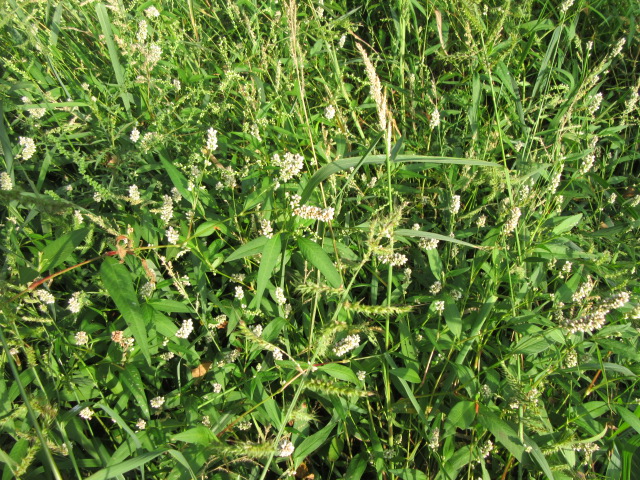
Persicaria pensylvanica (Pinkweed) on 9-10-23
Persicaria pensylvanica (Pinkweed) is a common sight around ponds, ditches, fairly shady areas, damp places, and around the house. This species doesn’t seem to get carried away. There is usually a colony next to a gate by the barn but I didn’t notice them.
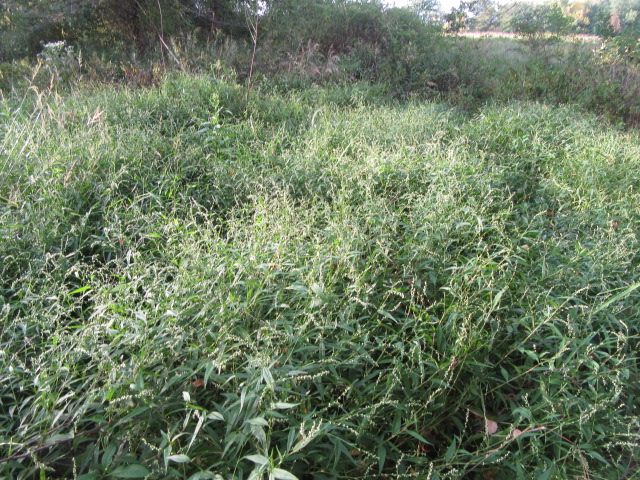
Persicaria hydropiper (Wild Water Pepper) on 9-10-23.
The other half of the pond is full of Persicaria hydropiper (Wild Water Pepper). This species of Persicaria can get carried away if it so desires. Damp areas are certainly its preference. I have no issues with any Persicaria species since I think they are near plants. They are like a faithful friend that always comes up. There are still 7 species here on the farm…
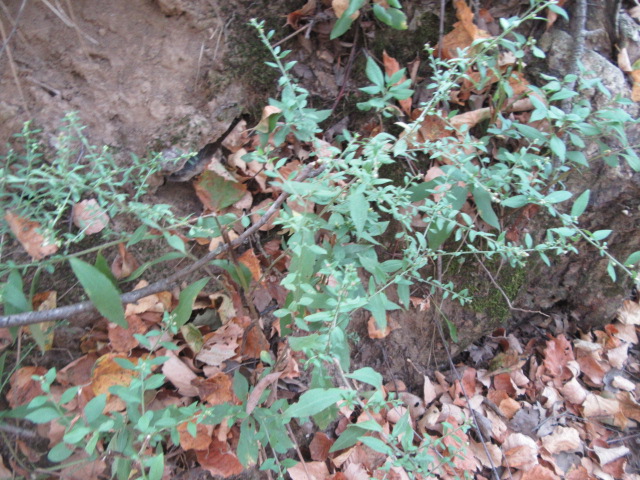
Symphyotrichum lateriflorum (Calico Aster) on 9-10-23.
I walked to the drainage ditch behind the pond to check on the Symphyotrichum lateriflorum (Calico Aster). At least they didn’t dry up, but waiting for them to flower is like waiting for Christmas on New Year’s Day.

Not sure why I took a photo of one of the two old tires in the wooded area behind pond #2. It was likely thrown back here by my grandpa so it has been here a very long time. Hmmm… There is even life growing on and in it…
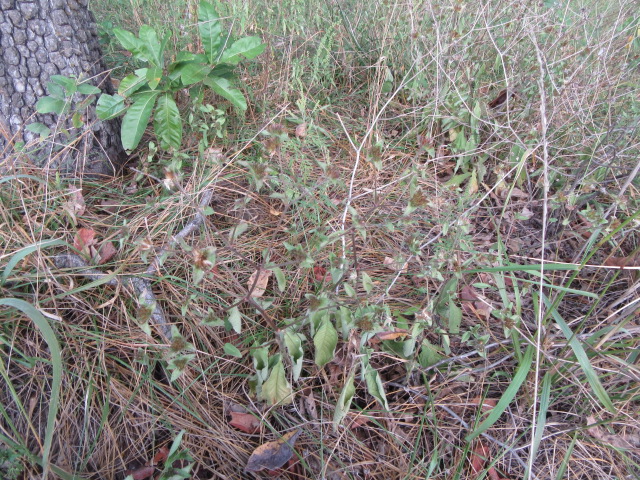
Elephantopus carolinus (Leafy Elephant’s Foot) on 9-10-23.
I walked out of the area behind the pond toward the persimmon tree to check on the Elephantopus carolianus (Leafy Elephant’s Foot). They have already flowered and gone to seed. You can tell how dry it is by the way the leaves are shriveled…

Croton capitatus (Wooly Croton) on 9-10-23.
I didn’t go farther down to the southeast pasture on the 10th but maybe I can do that later. There are usually a lot of Black-Eyed Susan in the area still in flower, but not this summer. I walked north from the persimmon tree and stumbled upon several Croton capitatus (Hogwort, Wooly Croton, ETC.) that are blooming now.
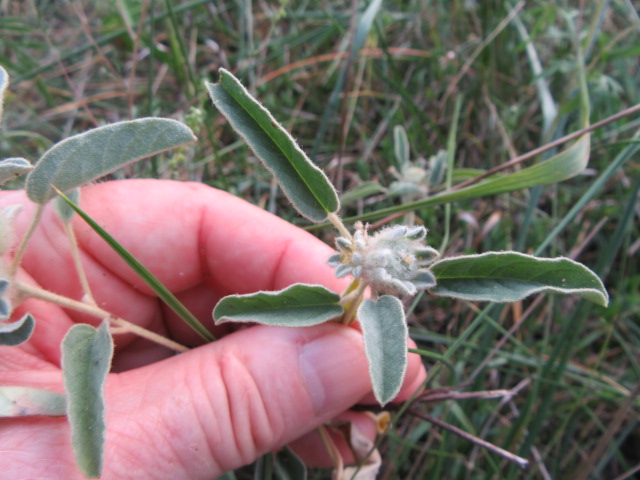
Croton capitatus (Wool Croton) on 9-10-23.
I always like their felt-like leaves and small yellow flowers. There are likely several of these farther down in the south part of the pasture.
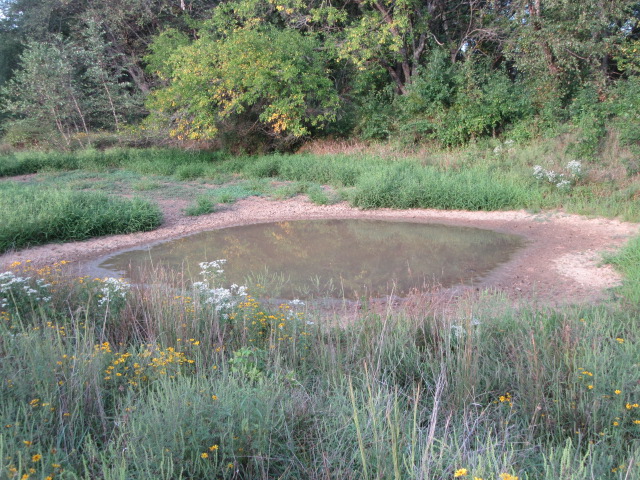
Back pond #2 on 9-10-23.
Hmmm… That’s all I can say about this pond…
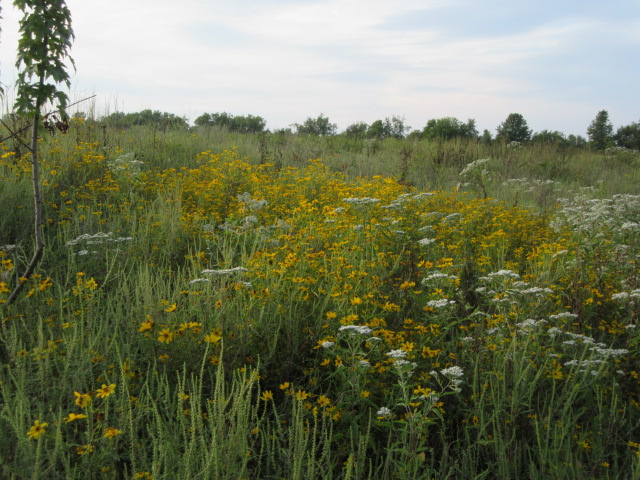
Bidens aristosa (Bearded Beggarticks/Tickseed Sunflower) and Eupatorium serotinum (Late Boneset/Tall Thoroughwort) on 9-10-23.
On the bank of the back pond #2 is quite a large colony of Bidens aristosa and Eupatorium serotinum.
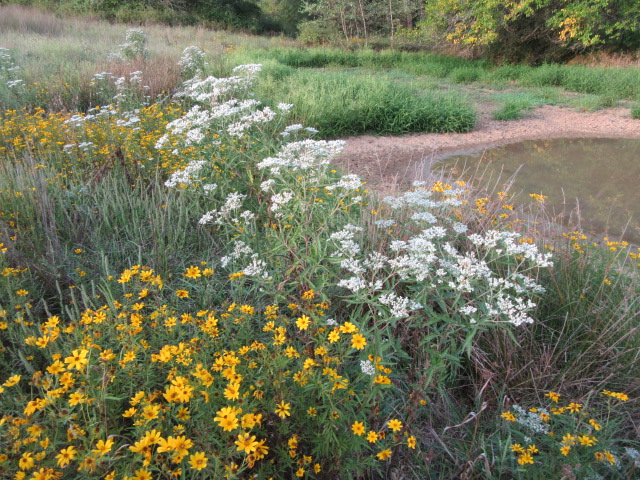
Bidens aristosa (Bearded Beggarticks/Tickseed Sunflower) and Eupatorium serotinum (Late Boneset/Tall Thoroughwort) on 9-10-23.
They must have deep roots to look so well…
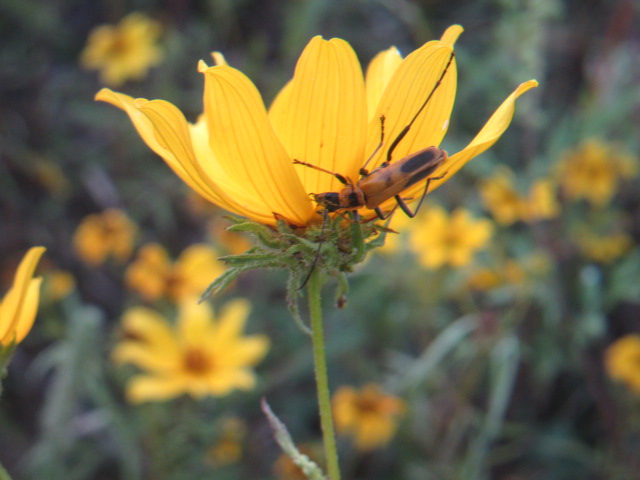
Chauliognathus pensylvanicus (Goldenrod Soldier Beetle) on 9-10-23.
There were A LOT of Chauliognathus pensylvanicus (Goldenrod Soldier Beetle) working on the Bidens aristosa. I would normally call this critter Chauliognanthus marginatus (Margined Leatherwing Beetle), but the last time I posted an observation on iNaturalist it was suggested it was C. pensylvanicus. I went ahead and posted the observation of this bug as C. marginatus. An iN member disagreed and said it was C. pensylvanicus because it had black legs… I checked a past observation and they didn’t have black legs. So, there are two species here that look alike with different legs…
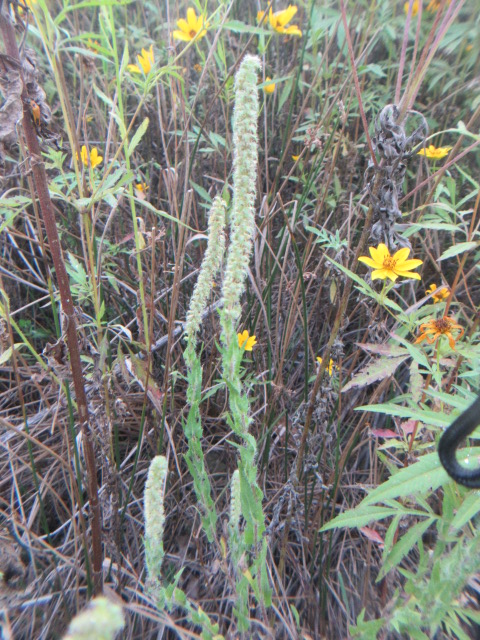
Ambrosia bidentata (Lanceleaf Ragweed) on 9-10-23.
Hmmm… I have seen Ambrosia bidentata (Lanceleaf Ragweed) before, but I just never bothered to give them a proper ID. There were always more interesting species to identify than another Ragweed… Ummm… I was going to say something silly about the species name and President Joe Biden, but I decided I better not get into politics. After all, this is a Ragweed… OUCH! I will take more photos and get a page made for this species.
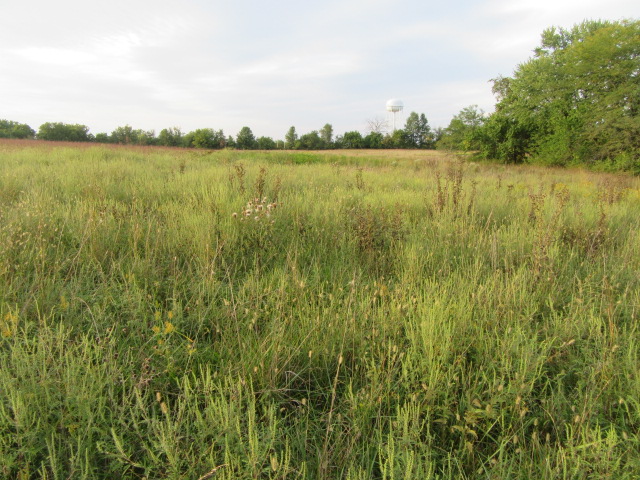
This area is normally filled with mostly Ironweed. One of the spots where the Monarch Butterflies feed. What Ironweed are here this year are pretty much all dried up…
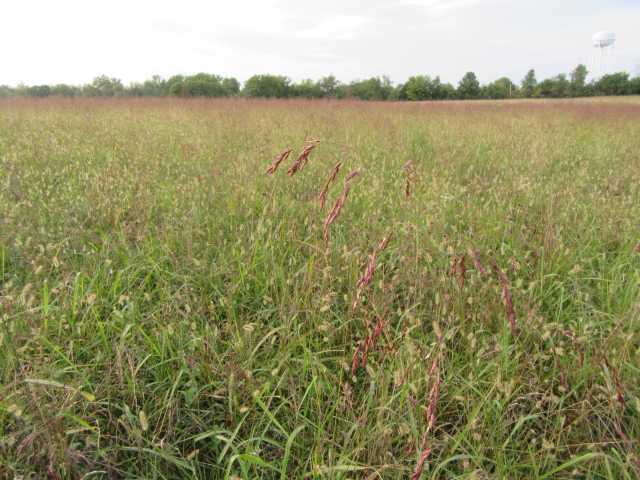
Tridens flavus (Purpletop Tridens) on 9-10-23.
Walking up into the main hayfield, there is a purple glow from the Tridens flavus. It has several common names including Purpletop, Purple Top, Redtop, Redtop Tridens, Grease Grass, or other similar names. It is a native grass that has been here as long as I can remember and it can grow quite tall in favorable conditions. During the heat of the summer, it was completely unnoticeable, but once temps started cooling off and we received a little rain it started greening up and will soon go to seed. The seeds are somewhat greasy which is where it gets one of its common names. Dad always called it Redtop, but many websites prefer Purpletop.
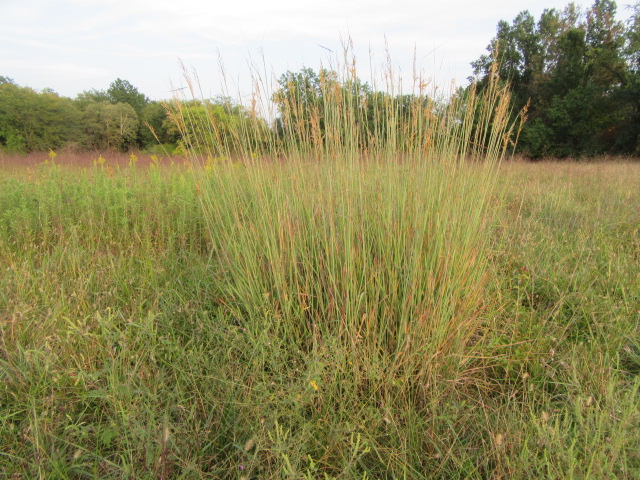
Tripsacum dactyloides (Eastern Gamagrass) on 9-10-23.
The grass I am keeping an eye on is the Tripsacum dactyloides (Eastern Gamagrass). I first identified this grass from a small colony I found on a backroad south of town last year. I did some research about it and thought it would be great to have it here. Well, on 6-8-23, I discovered three clumps in the main hayfield. They were blooming at the time and were easily identified. Each time I walked into the hayfield, no matter how hot and dry, this grass was still green and growing. The grass itself gets fairly tall, and the seed heads are taller than me. It is now blooming a second time. I didn’t get seed the first time, so I am keeping an eye on it so I can collect seed and scatter it around. Maybe I will sow some in the area north of the chicken house… This native grass was once very common in prairies throughout the Midwest, but grazing, farming, and planting other grasses took its toll. There are a few companies that specialize in native grass seed and one offers seed at $28.00 per ounce!

Lespedeza cuneata (Chinese Bushclover) on 9-10-23.
There are quite a few Lespedeza cuneata (Chinese Bush Clover) scattered throughout the hayfield now. They are doing great without rain…
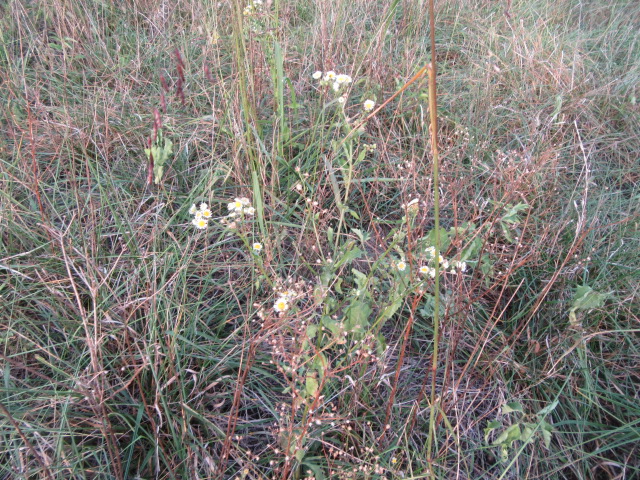
Erigeron annuus (Annual Fleabane) on 9-10-23.
It is really weird not seeing the Erigeron annuus (Annual Fleabane) not covering the entire hayfield. They covered the hayfield earlier before the drought set in. Now there are very few with flowers that aren’t dried up…
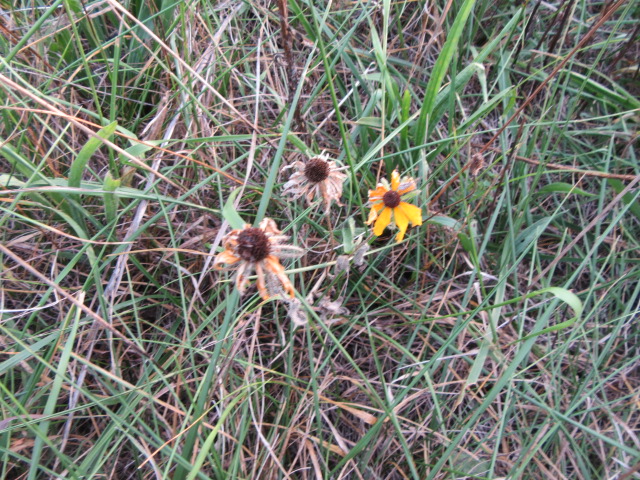
Rudbeckia hirta (Black-Eyed Susan) on 9-10-23.
Another species that is usually quite prolific is Rudbeckia hirta (Black-Eyed Susan). Normally, they are everywhere but now they are in a terrible state. Before the drought, there were enormous colonies plus many scattered smaller colonies… I will head to the south hayfield and southeast pasture to see the fate of the Black-Eyed Susan soon.
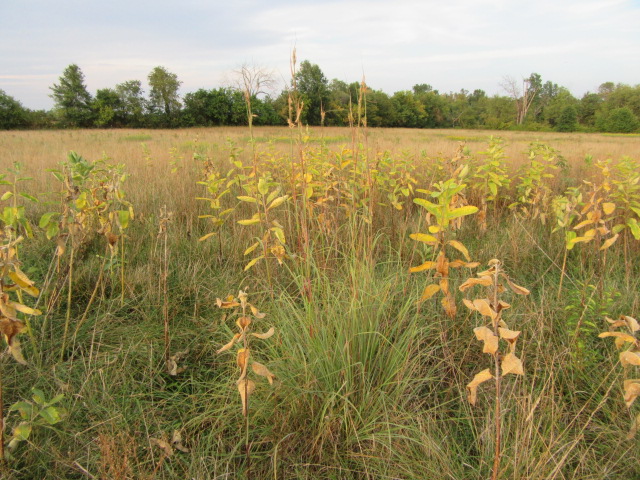
Asclepias syriaca (Common Milkweed) and Tripsacum dactyloides (Eastern Gamagrass) on 9-10-23.
Well, now isn’t that a sight to behold! Tripsacum dactyloides (Eastern Gamagrass) in the middle of one of the largest colonies of Asclepias syriaca (Common Milkweed). I somehow missed this Eastern Gamagrass earlier… Maybe it grew more since I last visited this milkweed colony…
As I left the main hayfield, which is on a hill, I entered a low area between the hayfield and the pond behind the barn. For some odd reason, the temperature drops dramatically, even on a 100° F day. I can’t explain it, but it is cool all the way from the north boundary fence, along the drainage area behind the pond, all the way to the boundary fence along the south side of the pond.
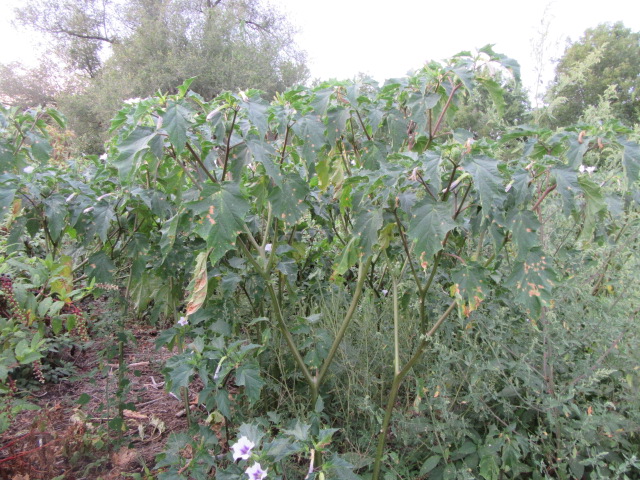
Datura stramonium (Jimson Weed) on 9-10-23.
Along the pond bank, south side, are several Datura stramonium (Jimson Weed). They get quite tall and have this weird odor to their leaves. Of course, as you may know, this is NOT a good plant. Common names include Loco Weed, Devil’s Snare, Stinkweed, Devil’s Trumpet, Hell’s Bells… You get the picture.
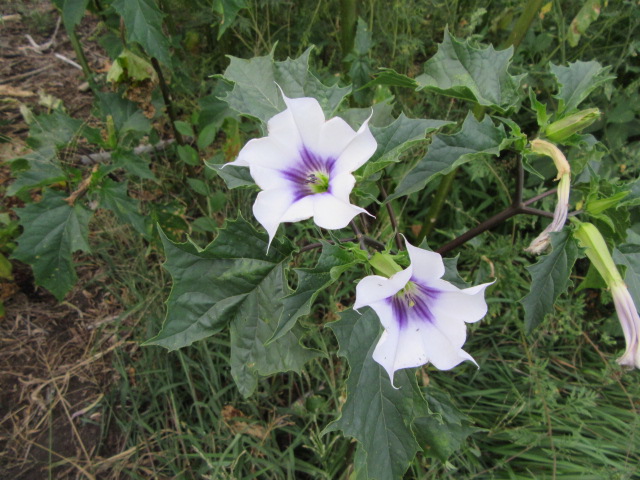
Datura stramonium (Jimson Weed) on 9-10-23.
You have to admit, though, they do have beautiful flowers…
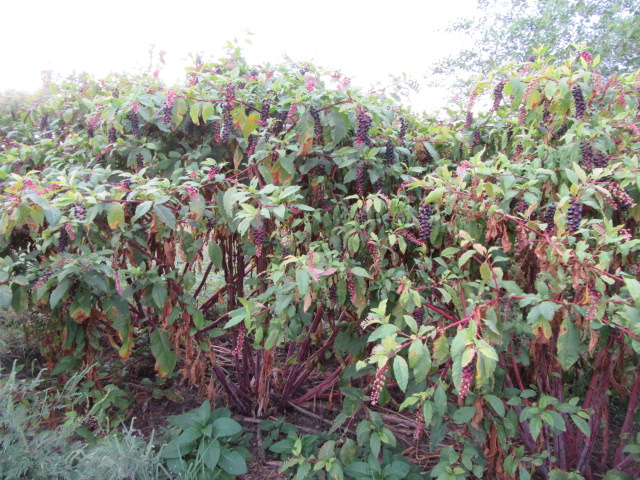
Phytolacca americana (American Pokeweed) on 9-10-23.
Well, I can’t leave the area without taking another photo of the Phytolacca americana (American Pokeweed). I like Pokeweed for some odd reason and pretty much allow them to grow wherever they want. There are a few exceptions like in the garden in the rows. Along the fence is fine…
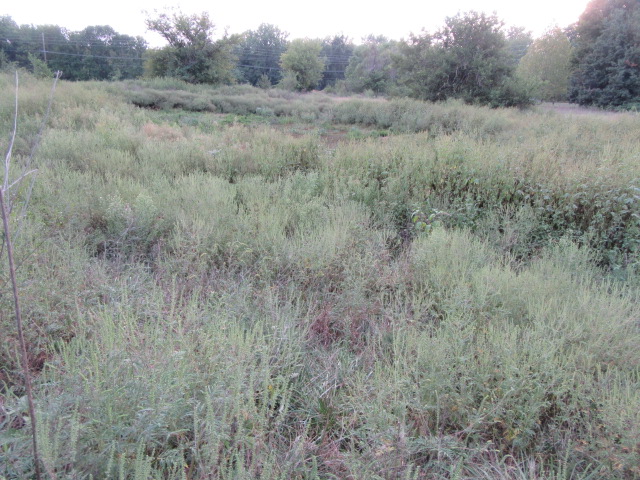
The main pond behind the barn on 9-10-23.
Hmmm… I remember when grandpa had this pond dug when I was a kid. It was so big! Over years of the cows walking on a certain spot on the south side, they created a ditch. When we would get downpours in the spring, the spot would erode until the ditch was much lower than the overflow pipe. Now, even with plenty of rain, it only gets maybe 3-4 feet deep. Right now, I think I could walk right out in the middle.
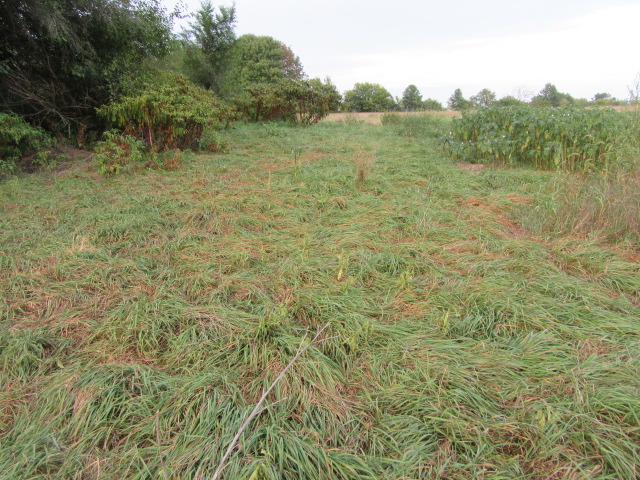
Part of the cool zone behind the pond…
The above photo is part of the cool zone behind the pond. The pond bank is on the left with a patch of Datura stramonium on the right. At the top of the photo, in the center, you can see the hayfield. Earlier in the summer, there were a lot of weeds here which I mowed. For some odd reason the weeds didn’t grow back and the grass grew. Hmmm… It could be Tall Fescue, but there are no stems. I did see one stem that looked like that Echinochloa crus-galli (Barnyard Grass) in the pond at the back of the farm. HMMMM…. I have no idea why the grass is lying down like that. It looks like a flood came through, but of course, that is impossible… One of those unexplained mysteries for now. Well, it was so hot over the summer and I was busy with the garden.

Erechtites hieraciifolius (Fireweed/Pilewort) on 9-10-23.
From there I walked along the drainage area south of the pond. I first identified Erechtites hieraciifolius (Fireweed/Pilewort) here a few years ago from a few plants growing along the entrance to the south hayfield. Now, there are several very robust plants growing along the ditch toward the small pond in the front pasture. They are pretty neat plants that know how to take advantage of a good thing…
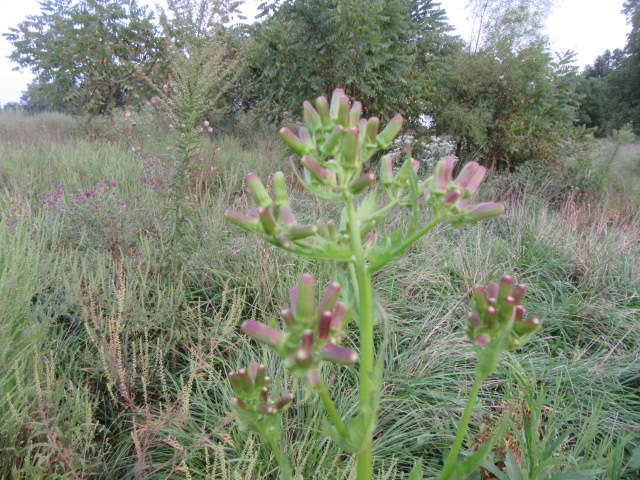
Erechtites hieraciifolius (Fireweed/Pilewort) on 9-10-23.
They have really odd flowers that peek out through the top of the… Ummm… I haven’t got a good word to explain the flower heads. It is kind of tube-shaped. The flowers are so small I likely can’t get a good photo. If you want to get a better idea, you can click HERE to read about this species on the Missouri Plants website.
Then I spotted a plant next to one of the Fireweeds I hadn’t seen before. The flowers were kind of “nightshady”…
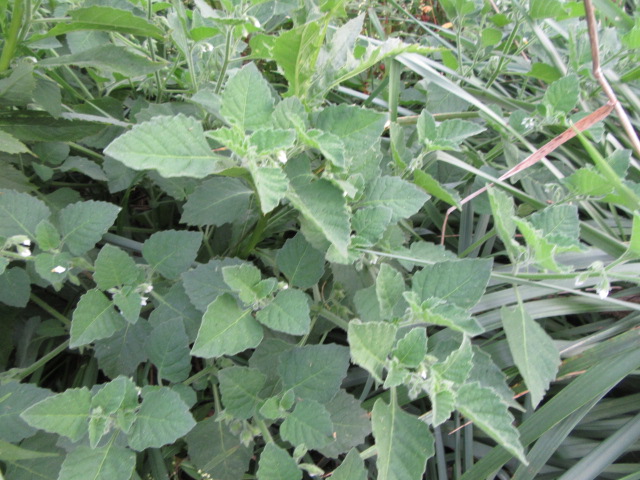
Solanum sarrachoides (Hairy Nightshade) on 9-10-23.
I took a few photos and used the drag-and-drop feature on iNaturalist and the only suggestion was Solanum sarrachoides also known as Hairy Nightshade. Well, I was right in my guess. I could tell from the flowers it was a nightshade but I had not encountered this particular species before. The only other nightshade I have seen here was the Solanum americanum (Black Nightshade) back in 2018. I remember it well. When I found it in 2018 it was a huge plant already. Some of the photos weren’t that good, so I went back the next day to take more. The entire plant was completely gone without a trace! WHAT THE HECK! Another mystery. The next one I found was in a flower bed at the end of the drive-up area at the bank. Whoever maintains the beds must have not known what it was, because they left it there all summer. It was growing among the yellow Missouri Primrose. 🙂 I made a comment to a teller about the deadly Black Nightshade in their flower bed. She laughed and said she wasn’t surprised.
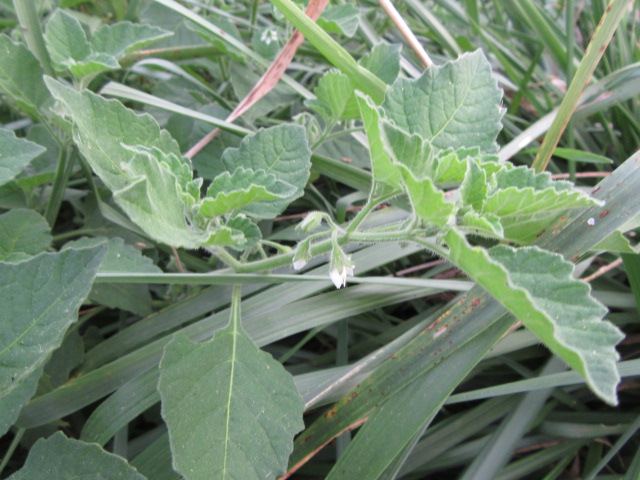
Solanum sarrachoides (Hairy Nightshade) on 9-10-23.
If you see flowers like that, you may have run across a species of Nightshade… I have to take more photos so I can make a page for this species.
I walked on down to where the Symphyotrichum novae-angliae (New England Aster) usually grows next to the front pond. Sadly, there is no sign of it. GEEZ!!!
I crossed the ditch to check on the Frostweed that decided to come up next to the walnut trees this spring. Well, it was still there but not in photo-worthy condition. So, I walked back toward the ditch toward the fence…
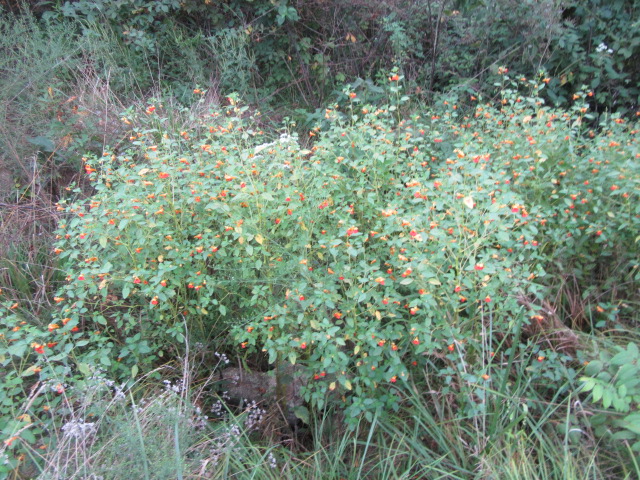
Impatiens capensis (Jewelweed) on 9-10-23.
I don’t really have to worry about the Impatiens capensis (Jewelweed). I think they would survive anything… When I first came back in 2013, they had taken over the swampy area in the southeast corner of the farm. Well, that changed and they were removed from their throne. Then, a few years ago, they had gotten a hold along the fence in the south hayfield. Well, somehow, that changed as well, and last year there weren’t that many. So, I suppose although they can become quite invasive, they have their limits. They have been in this spot for several years now because nothing else wants to grow here.
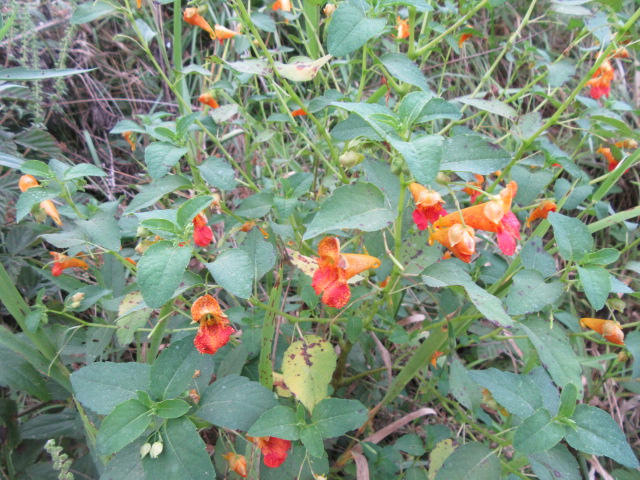
Impatiens capensis (Jewelweed) on 9-10-23.
You must admit, they do have neat flowers the way they dangle…
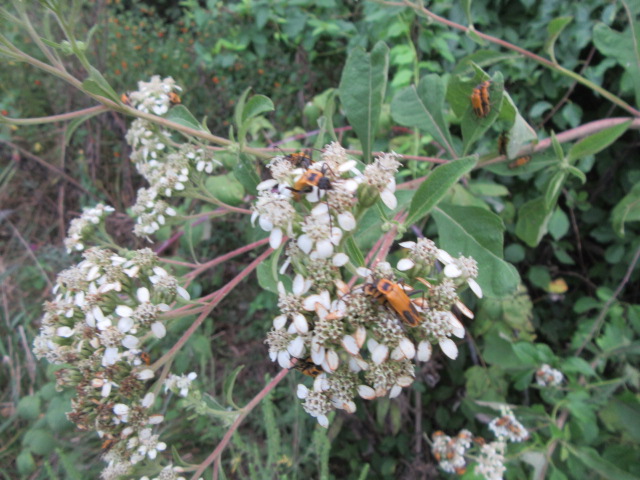
Verbesina virginica (Frostweed/White Crownbeard) on 9-10-23.
I crossed the ditch to find the Verbesina virginica (Frostweed/White Crownbeard) kind of lying down on the job. They do that if there isn’t enough moisture to keep them standing up. They are one of my favorite wildflowers, as I have repeatedly said, with their winged stems.
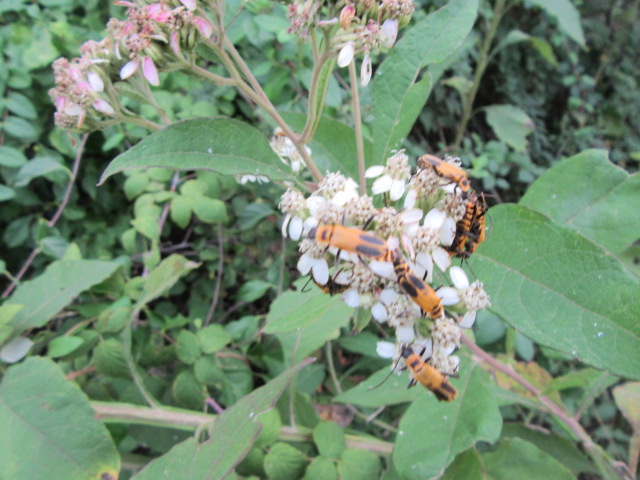
Cauliognathus pensylvanicus (Goldenrod Soldier Beetle) on 9-10-23.
The Cauliognathus pensylvanicus (Goldenrod Soldier Beetle) has gone wild over the flowers of the Frostweed. Well, the males have a different agenda.
There wasn’t much to see along the fence like there usually is, so I walked on back toward the barn. I have two other species to check on…
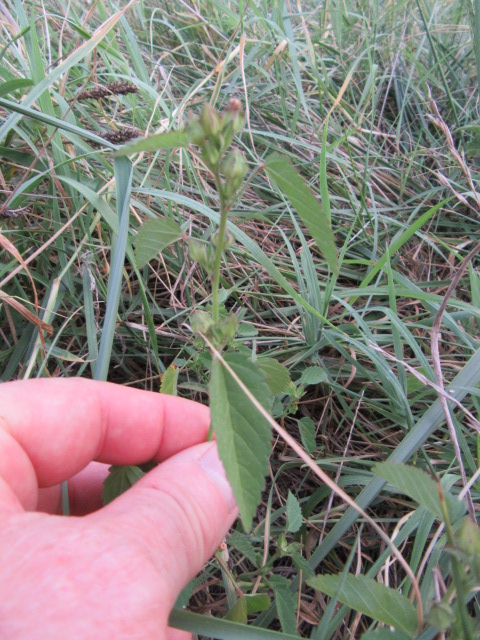
Sida spinosa (Prickly Fanpetals) on 9-10-23
There are a few Sida spinosa (Prickly Fanpetals) in the pasture just south of the barn but not like last year. To be honest, there are A LOT of them in the garden this year. I’m not too familiar with this species since I first identified them last year. There are A LOT of these in the garden this year I just realized what they are. I had been watching them for a month or so to see what their flowers looked like.
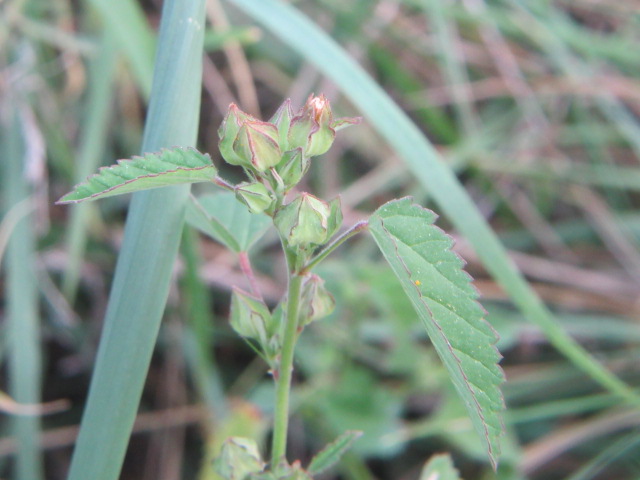
Sida spinosa (Prickly Fanpetals) on 9-10-23.
Unfortunately, you have to get photos of their flowers early in the day or they close up… I did get photos of their flowers last year and if you click HERE you can see where the name “Fanpetals” comes from. They are neat for sure.
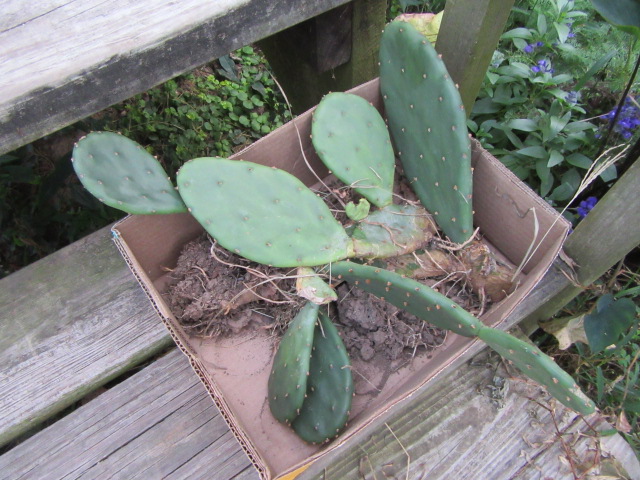
Opuntia sp. on 9-10-23.
Before I end this post, I wanted to show you my new Opuntia sp. (Prickly Pear). A friend of mine (and the minister where I go to church) went to an auction to bid on a cart used by the M-K-T railroad. I went to help him load it and spotted a very large pot with a VERY LARGE thornless Prickly Pear. I rescued a large Prickly Pear when I lived in Mississippi, but the thorns were ridiculous. I had wanted one without thorns for many years, so it was my chance to bring a few cuttings home. The lady who had the auction was moving, so I asked if I could have a cutting. She said I could have all I wanted and brought me a box and trowel… I went over to where they were and there were several that had grown into the dirt next to the pot, so I dug up a few, roots and all. Now, I have to figure out where I am going to put them…
Well, that’s all for now. I can’t believe it took me 11 days to finish this post! I was busy, then one thing led to another, or I couldn’t find anything to post about… Lately, I have been watching TV more than working on the blog…
Until next time, be safe, stay positive, and always be thankful!
